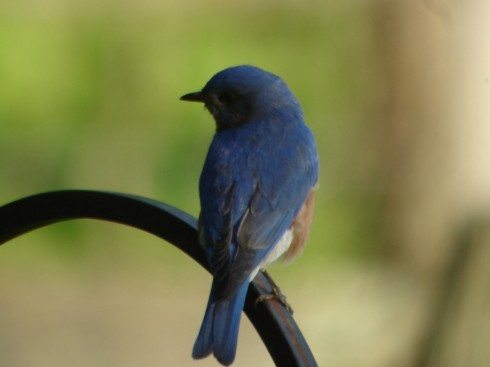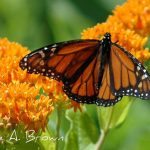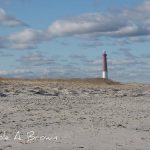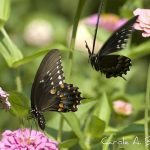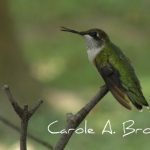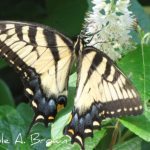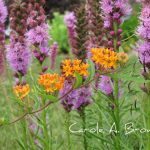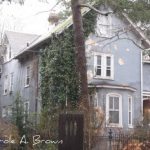I was fortunate to attend a Bluebird workshop over the weekend at Mount Cuba Center in Hockessin, DE led by my friend Katharine Patterson.
I’ll be returning to talk about the wonderful work Mount Cuba Center is doing in a later post, because the natural lands manager, Jim Subach, is an incredibly fascinating guy with a very large restoration job on his hands.
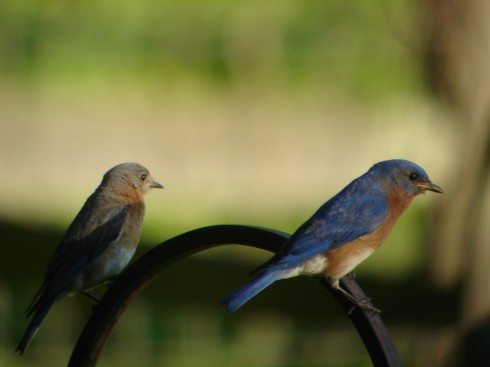
Eastern Bluebird pair (c) Katharine Patterson
Katharine Patterson has been studying and monitoring bluebird trails for over 15 years. Listen as she describes the natural history of this cheery bird plus the many factors in the sad decline of this species:
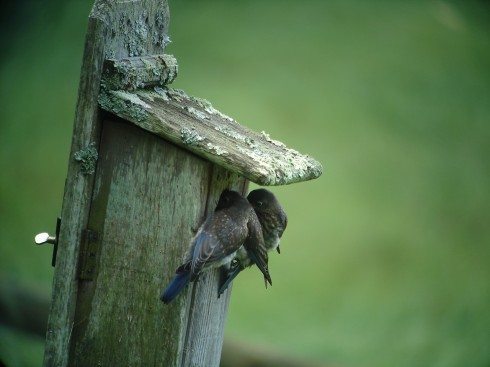
Bluebird Nest box (c) Katharine Patterson
What do Bluebirds need in Your Wildlife Garden?
Nest boxes and other cavities free from predators. To commit to providing safe nesting places for bluebirds is to commit to controlling House Sparrows, Starlings, snakes, raccoons, and other predators.
Approved nest box plans
Managing House Sparrows
Nest boxes should be sited in open areas away from woodland edges, with single trees or shrubs nearby.
If you want multiple bluebird boxes, they should be spaced 100 yards apart.
During spring and summer, the majority of a bluebird’s diet is insects, and the young are fed a diet of all insects. It is imperative that no pesticides are sprayed near bluebird nests. Pesticide poisoning is a significant problem in bluebird declines.
During the winter months, bluebirds shift to eating fruits and berries, and thus are able to be short-distance migrants. They do not move far from their spring breeding grounds for the winter.
You can help bluebirds by planting native fruiting shrubs especially those whose fruits persist through the winter. Here’s some suggestions, check to see which are native to your area:
Flowering Dogwood
Holly
Eastern Red Cedar
Elderberry
Viburnum
Bayberry
Blueberry
Serviceberry
Avoid invasive plants.
Three million acres of natural land are lost every year to invasive plants. This destroys native habitat for bluebirds and other wildlife. Plants to especially avoid are:
Russian and Autumn Olive
English Ivy
Barberry
Bradford Pear
Privet/Boxwood
Japanese Honeysuckle
Multiflora Rose
Porcelain Berry
Observing the bluebirds in your wildlife garden can be a great source of amusement and education for you and your children.
What are you doing for Bluebirds in your garden?
More From Ecosystem Gardening:
Submit your review | |

